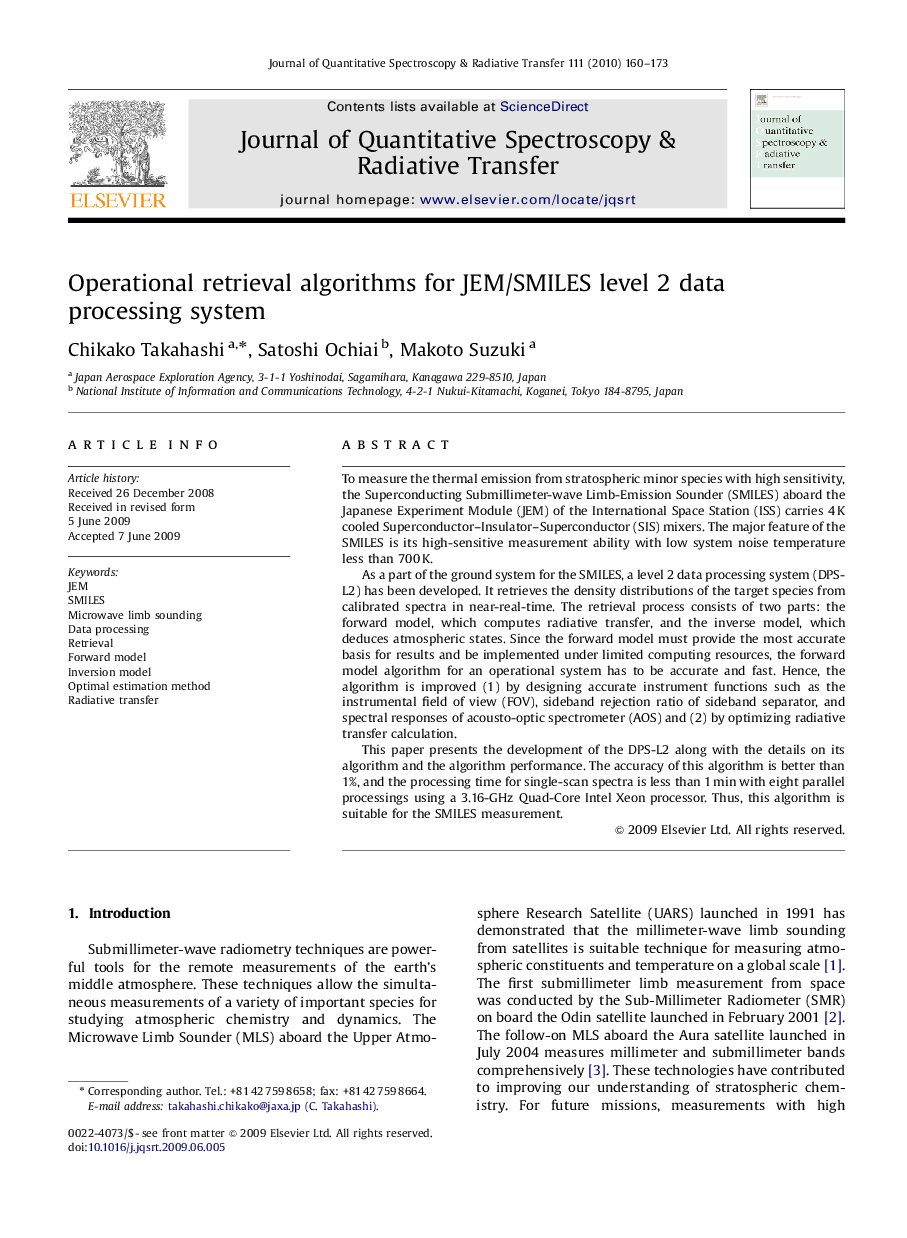| Article ID | Journal | Published Year | Pages | File Type |
|---|---|---|---|---|
| 5429950 | Journal of Quantitative Spectroscopy and Radiative Transfer | 2010 | 14 Pages |
To measure the thermal emission from stratospheric minor species with high sensitivity, the Superconducting Submillimeter-wave Limb-Emission Sounder (SMILES) aboard the Japanese Experiment Module (JEM) of the International Space Station (ISS) carries 4Â K cooled Superconductor-Insulator-Superconductor (SIS) mixers. The major feature of the SMILES is its high-sensitive measurement ability with low system noise temperature less than 700Â K.As a part of the ground system for the SMILES, a level 2 data processing system (DPS-L2) has been developed. It retrieves the density distributions of the target species from calibrated spectra in near-real-time. The retrieval process consists of two parts: the forward model, which computes radiative transfer, and the inverse model, which deduces atmospheric states. Since the forward model must provide the most accurate basis for results and be implemented under limited computing resources, the forward model algorithm for an operational system has to be accurate and fast. Hence, the algorithm is improved (1) by designing accurate instrument functions such as the instrumental field of view (FOV), sideband rejection ratio of sideband separator, and spectral responses of acousto-optic spectrometer (AOS) and (2) by optimizing radiative transfer calculation.This paper presents the development of the DPS-L2 along with the details on its algorithm and the algorithm performance. The accuracy of this algorithm is better than 1%, and the processing time for single-scan spectra is less than 1Â min with eight parallel processings using a 3.16-GHz Quad-Core Intel Xeon processor. Thus, this algorithm is suitable for the SMILES measurement.
